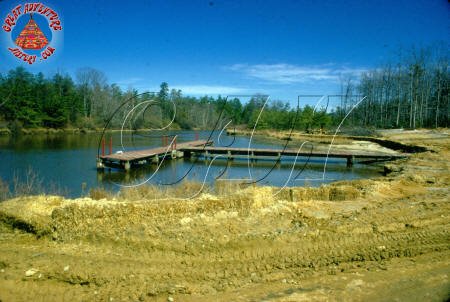 |
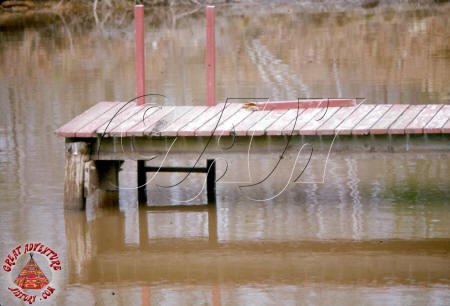 |
|
|
|
One of the largest projects in the initial construction of
Great Adventure in 1974 was the Fort, which was designed to be the
larger than life icon of the Rootin' Tootin Rip Roarin' area of the park
as well as serve as the station for two of the park's major attractions,
Runaway Mine Train and the Sky Ride.
The creek where the Fort was
constructed was used as part of the Girl Scout's camp before the park
was built, and a dock had been built years before as part of Camp Wanda.
The first stage of construction was pouring the foundation for
the massive structure, and placing the pilings for the Runaway Mine
Train's supports along the edge of the creek before the building took
shape.
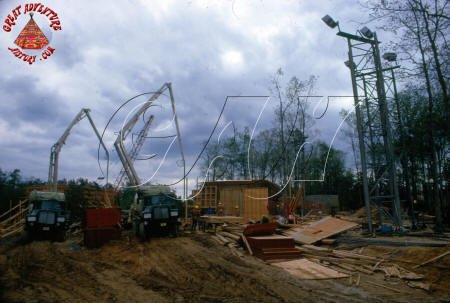
 |
 |
|
|
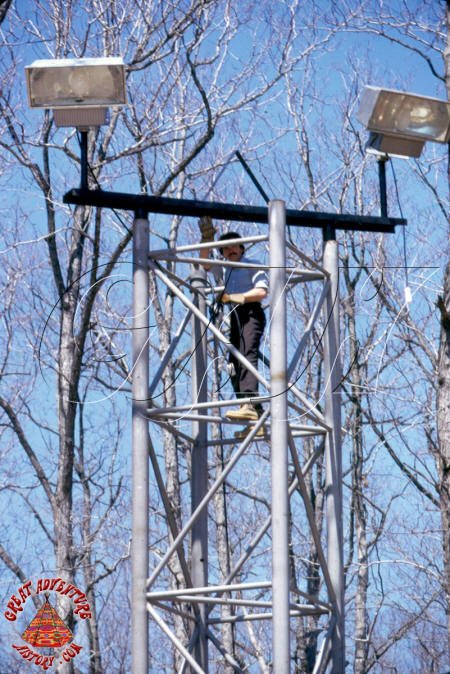 |
|
|
|
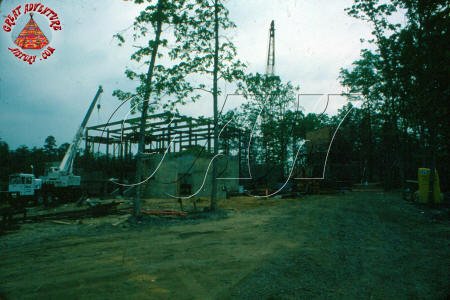 |
Crews worked day and night to complete construction in time for the July
opening day. Temporary light towers were brought onto the site for the
long work days. The towers of the Fort took shape first, with the
concrete walls being formed with plywood and rebar structures then
filled with concrete. With the towers taking shape, the steel framework
for the Sky Ride station began to rise. The station was designed to
house the heavy counterweights below the floor. These weights keep
tension of the cables as the weight of the cars varies. With the
steel in place, carpenters formed the roof and floor of the station
which were also poured concrete. |
|
|
|
 |
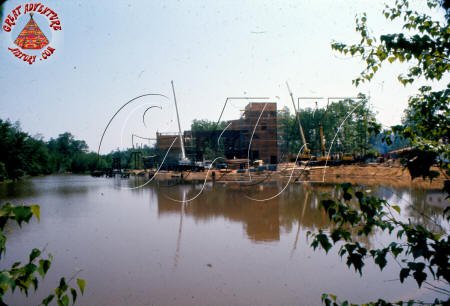 |
|
|
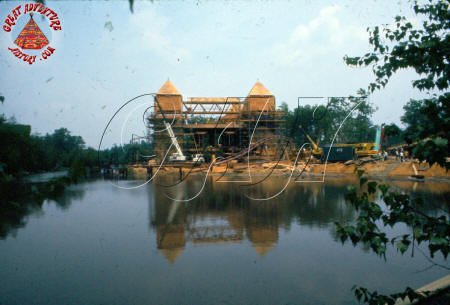 |
|
|
|
|
Once the concrete walls were in place, the exterior of the building was
sheathed in rough hewn logs to give it the look of a wooden structure.
Massive scaffolds were needed to provide access for the carpenters
covering the structure as well as for construction of the walkways
around the towers. |
 |
|
|
|

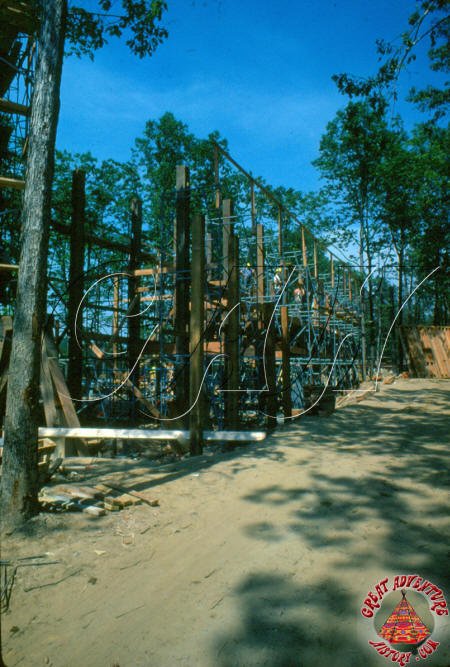
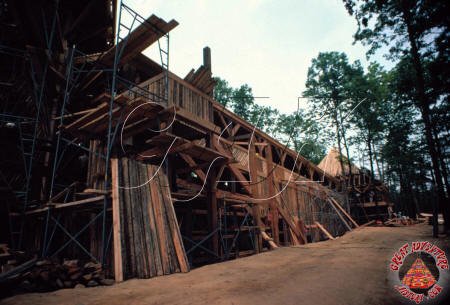 |
 |
|
|
One of the last sections of the Fort to be constructed was the
station for the Runaway Mine Train which unlike the rest of the Fort was
built of wood rather that concrete and steel. The wood structure along
with the smallest of the Fort's towers had to be built at the same time
as the roller coaster's track. The station platform was built with a
slope to match the track which relied on gravity to advance the trains
out of the loading and unloading area.
Despite the best efforts
of the construction crews, the Fort and the surrounding Rootin' Tootin'
Rip Roarin' area weren't quite ready for the park's July 1st opening day
and opened three days later on July 4, 1974.
|
|
|
|
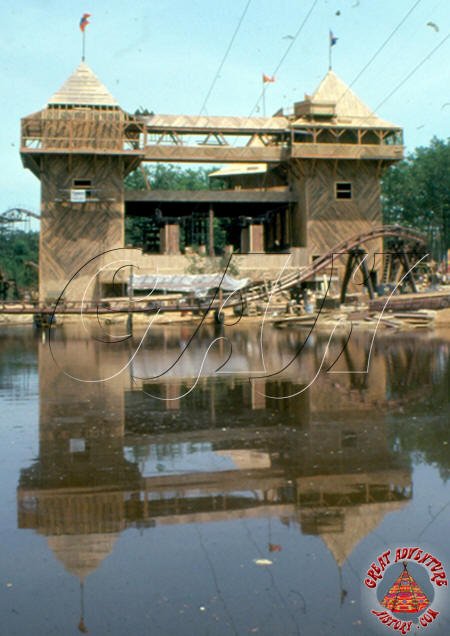 |
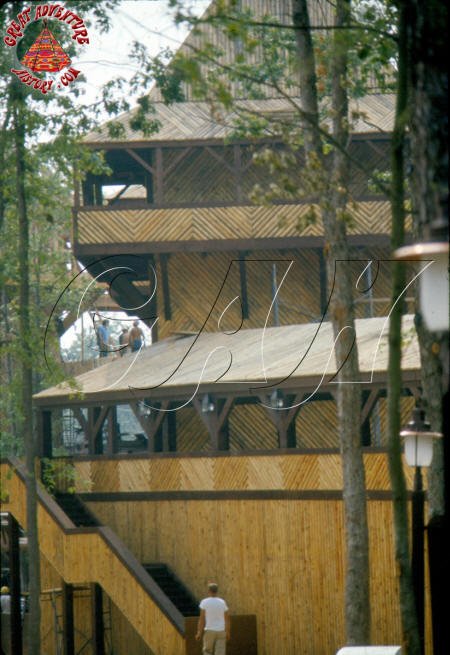 |
|
|
|
|
|

![]()